Common Problems After Changing Fuel Pump: 6 Potential Fixes
The fuel pump supplies gasoline to the engine. After changing the fuel pump, some common problems can happen. The engine might lose power and acceleration. This happens because the new fuel pump does not push enough gasoline to the engine. Another problem is rough idle or stalling. Again, the fuel pump may not be giving enough gasoline for the engine to run smoothly. One more issue after changing the pump is lower gas mileage. A faulty installation can cause leaks. It can also lead to low pressure. Low pressure prevents the engine from running efficiently. That drops the miles per gallon. If any of these problems occur after a fuel pump change, check for diagnostic trouble codes. Use a code reader tool. The codes help pinpoint the exact problem. Then you know if repairs are needed.
So you just replaced your fuel pump and now your car is not working right. Don’t worry, this happens sometimes. Changing the fuel pump is a big part of how your car’s fuel system works. If something goes wrong, it can make your car die or not start at all.
After putting in a new fuel pump, you need to watch for some common problems. These include electrical problems, fuel leaks, and issues with fuel pressure.
In this writing, I will share what I have learned. I will give some easy tips to help you fix or avoid problems after changing the fuel pump. So let’s look at each one and get your car back on the road.
If you want to get a quick answer, you can chat with a virtual mechanic for free.
For your convenience, I’ve designed an interactive tool that assists in diagnosing vehicle issues. It takes you through straightforward steps. Be sure to check it out.
If you want a video overview of this entire guide on the common problems after fuel pump replacement, I have explained everything in a very concise manner in the following YouTube video:
What are the Typical Issues After a Fuel Pump Change?
Here are some of the most frequent problems after fuel pump replacement:
- Fuel leaks and fuel pressure problems
- Loose fuel pump
- Electrical issues
- Inconsistent reading on the fuel gauge
- Difficulty starting the engine or engine stalling
- Dust or Debris getting into the gas tank
- Engine Misfires
- Rough Idle
- Poor fuel economy
- Check engine light illuminated on the dashboard
- Accidentally pinching a fuel line
- Loud whining noise from the fuel tank
You can jump straight to the explanation if you have preliminary knowledge of electrical fuel pump. Otherwise, I will suggest to also read the next section before jumping straight to the problems that can occur after fuel pump replacement.
- The fuel pump assembly consists of a fuel pump (a small cylinder), float lever, fuel gauge sender, fuel pump casing, harness connector, gasket, and strainer.
- The fuel inside the tank should always be more than 1/4th of the fuel tank capacity. It will prevent the fuel pump from running dry, and also help keep it cool.
- While installing the fuel pump, make sure that you do not bend the fuel level float arm.
- Make sure that there are no sharp bends (pinch) in the fuel line after you change the fuel pump. It will prevent delivery of fuel at an optimum pressure.
- Make sure that you do not damage the wiring connection of the fuel gauge sending unit while installing the fuel pump.
- Make sure that the position of the float arm is in the same direction as that installed by the factory.
- Don’t forget to change the fuel filter when you change the fuel pump.
- Make sure there are no debris or metal shavings when you change the fuel pump. It will prevent the supply of fuel and cause difficulty in starting the car.
- In some vehicles, a fuel pump has a strainer on its inlet. If you’re only changing the fuel pump, make sure to install a new strainer at its inlet.
- Always check the fuse and relay of the fuel pump after you change it.
- Make sure that the harness connector that goes into the fuel pump is clean.
- Check for any fuel leaks after installing the fuel pump. You should also measure fuel pressure after changing the fuel pump. Moreover, you must follow instructions in the owner’s manual as the installation procedure of a fuel pump for each vehicle is different.
- Make sure that fuel hoses have clamps installed.
- Make sure that fuel hoses are not cut, pinched or collapsed.
- The harness connector of anew fuel pump assembly MUST be replaced, even if there are no issues with the old connector.
Importance of the Electric Fuel Pump in Car Operation
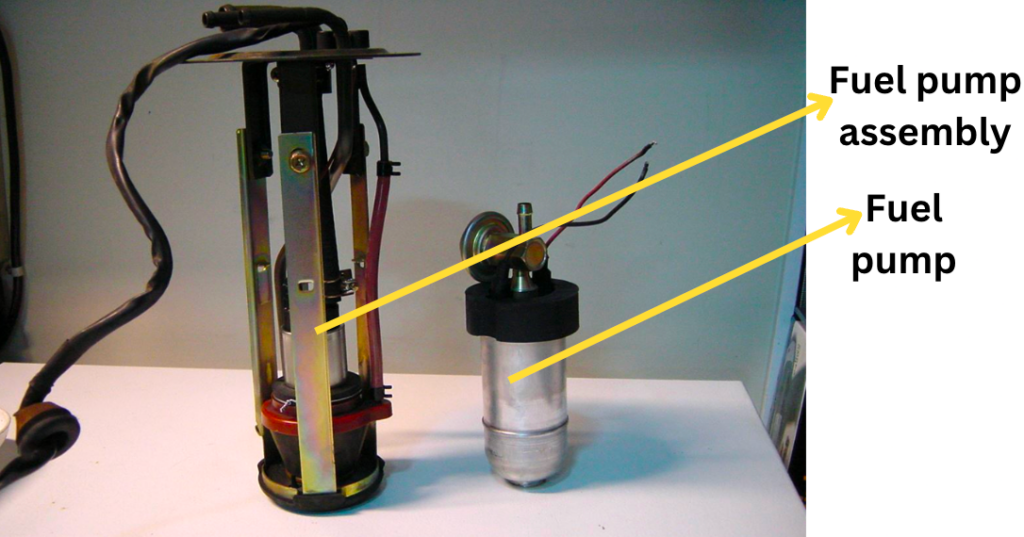
The fuel pump used to be part of the engine and run by the camshaft. Those were mechanical fuel pumps.
Now most cars use an electric fuel pump instead of a carburetor. The electric pump pushes fuel to the injectors at the right pressure. It turns on when the ECU (vehicle’s computer) tells it to.
When you only turn on the ignition, the fuel pump runs for a few seconds. After the engine starts, the pump keeps going. Electric pumps always give the engine the same amount of fuel pressure. This helps the car start more easily.
Electric pumps also stop fuel vapor lock. This happens when fuel gets too hot and turns to vapor. Then it can’t flow right and the engine stops. The fuel pump keeps fuel moving at constant pressure so no air pockets form.
Old fuel pumps were linked with the engine. Electric ones go near the gas tank in the back. This helps the fuel stay cool. The pump sends a steady flow of fuel up to the engine all the time. Being down in the tank helps keep the pump from overheating.
A notable advantage is that electric fuel pumps are not physically attached to the engine, allowing for flexibility in size and shape. This flexibility is useful when an exact replacement is not available.
Furthermore, electric fuel pumps are not affected by worn cams on the camshaft, unlike mechanical fuel pumps. Cams are engine components that assist mechanical fuel pumps, but electric fuel pumps operate independently, eliminating this concern.
Some electric pumps have a secret on/off switch. This stops thieves from starting the car. Overall electric fuel pumps are better than mechanical ones in many ways. They give steady fuel pressure and flow. They help prevent problems like vapor lock. And they let the engine get just the right amount of fuel.
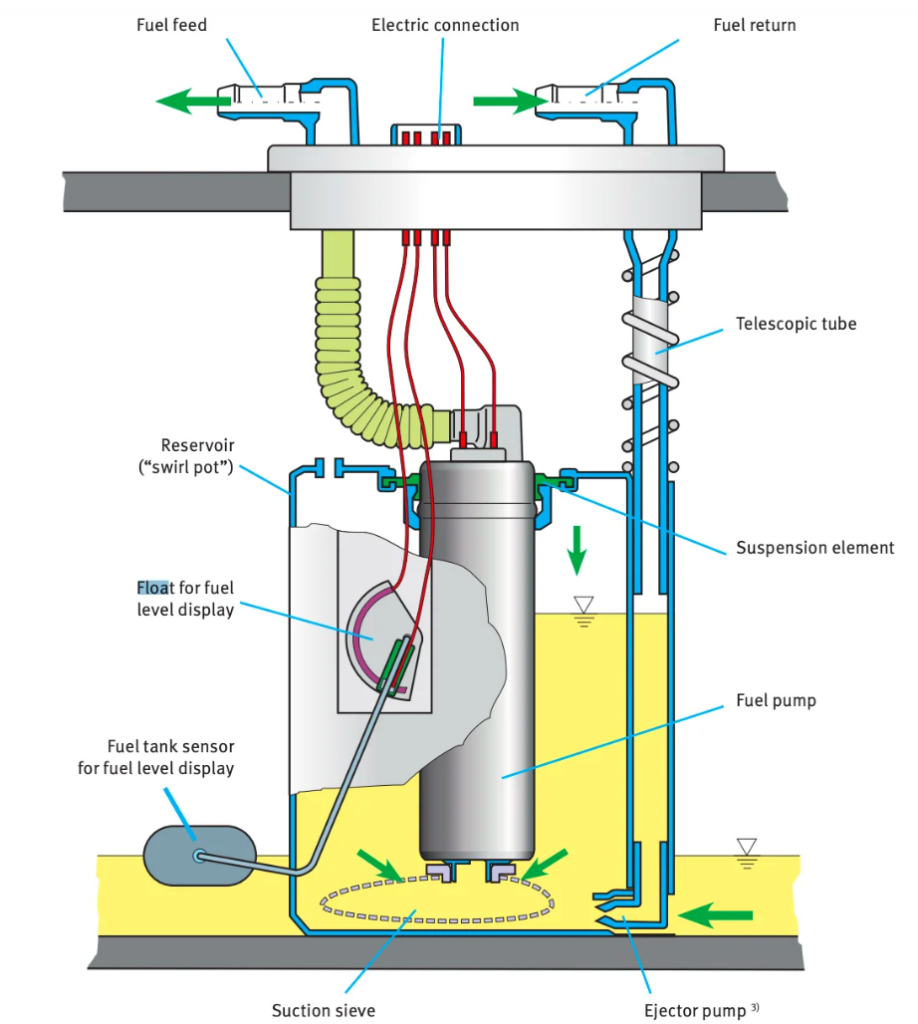
What Can Damage Electric Fuel Pump?
The gas tank needs enough gas. When the tank is low, the fuel pump works harder.
The fuel pump can overheat if it works too hard. Then it does not work as well. Finally it fails. If you have read my article on why a car sputters after getting gas, I have elaborated on how the fuel pump can experience fuel starvation.
If the pump does not get gas, it gets too hot. Gas builds up inside. This causes problems. The engine does not get gas. The pump gets damaged.
In situations where the fuel delivery is insufficient or completely absent, the current consumption increases while the cooling process is effectively halted. As a consequence, gas accumulates within the pump, causing issues in the engine’s fuel supply and eventually leading to pump deterioration.
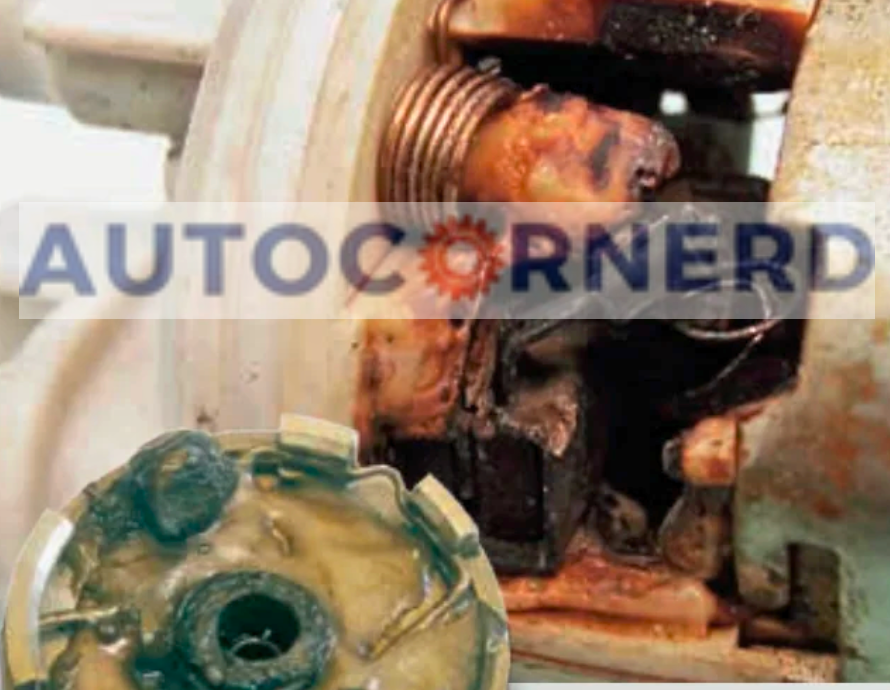
Dirt and debris in the fuel also damage the pump. Bits get in the tank and cause damage to the pump’s delicate internal components.
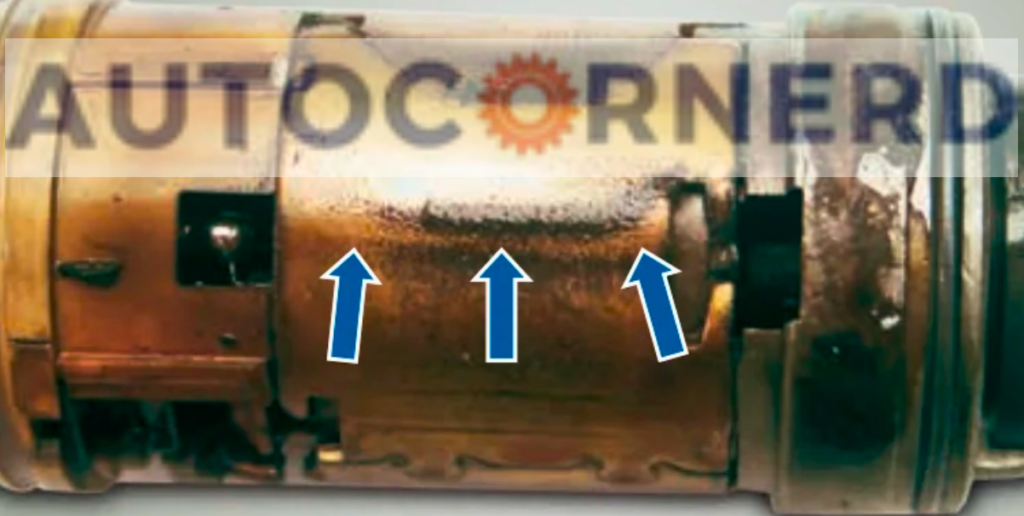
Electrical issues hurt the fuel pump too. Over-voltage or under-voltage conditions make the fuel pump get too hot, leading to premature failure. Damage to wires also causes problems. The pump may not work sometimes or stop completely.
What are the Problems With Vehicle After Replacing Fuel Pump?
Here are the problems your vehicle can face after replacing the fuel pump:
1. Electrical Faults After Installing New Fuel Pump
The fuel pump gets power from the car’s electrical system. After replacing the pump, there can be electrical connection issues. This is the second most common problem after a fuel pump replacement.
Even if the new fuel pump works fine, bad electrical connections can limit its output. This will make the engine run poorly, just like before the pump was replaced.
The fuel pump fuse protects its electrical circuit. If the fuse is blown, the pump won’t work right. To fix it, put in a new fuse with the same amp rating. The fuse location is in the owner’s manual.
Another electrical part is the relay. It controls the electricity to the fuel pump. A bad relay might not give the pump enough voltage to work correctly. To check, swap the relay with a similar one in the fuse box. If the pump works now, the old relay was bad. Get a replacement.
The fuel pump wiring connector can also cause problems. Corrosion or wear on the connector pins gives resistance. This limits the power getting to the pump. The pump has to work harder and spin slower.
When the fuel pump turns slower from bad connections, it can’t build enough fuel pressure. This causes hard starting and rough idle. Working too hard shortens the pump’s life. It gets weaker and less efficient, eventually failing completely.
The disrupted fuel flow makes the engine stumble and lose power temporarily. Overall performance suffers, and driving gets less safe.
To fix bad pump electrical connection:
First, test the pump fuses and relays. See if any are damaged.
Follow this guide to check fuses and relays. The method is the same for all car electrical parts.
Lastly, a short circuit can happen when replacing the pump. Some mechanics disconnect the negative battery cable first. If they remove the positive cable first by mistake, it can short the system. Always disconnect negative first and connect positive first.
If the car won’t crank after a pump replacement, there might be a short circuit.
Fixing issues for the connector of the fuel pump
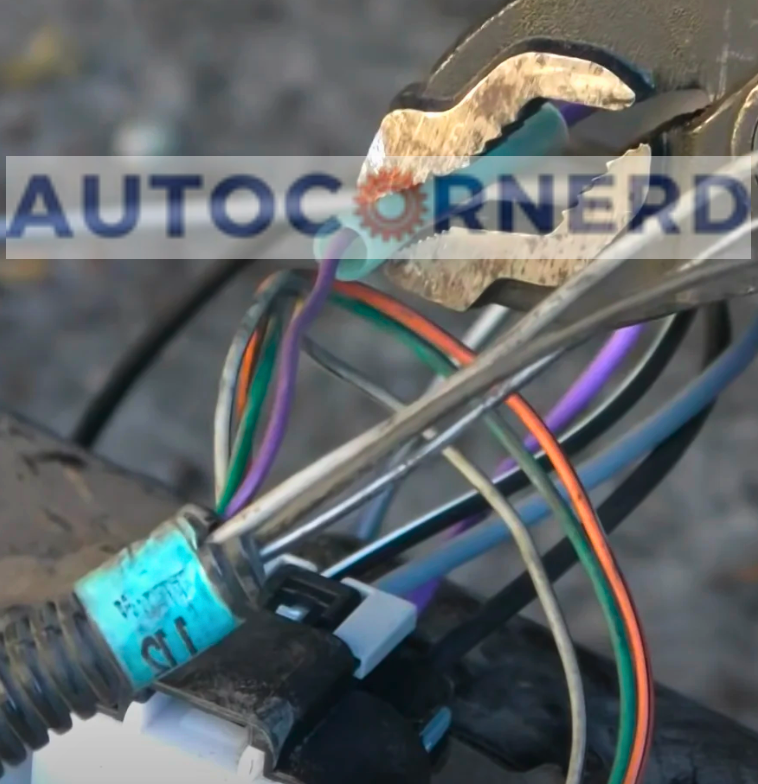
You can also use a new connector that comes with a pump assembly if the old connector is damaged.
Now, this is a very tricky process as the color coding of the wires of a new pump connector can be different compared to that of the old one.
If you don’t follow the color coding, it will result in the fuel pump not starting. As a result, your car will also not start after changing the fuel pump.

So, to install the new connector of the new fuel pump over the old connector, cut the wires to the desired length and slice the insulation up to a certain length.
After that, from the reference of the color code diagram of the new connector, match the vehicle wire colors and position to the replacement style connector.
You can watch the below video for a better understanding:
2. Debris Entry in Tank When Changing Fuel Pump
One big problem after changing the fuel pump is dust or dirt can get in the gas tank. This can happen if the tank is not cleaned well before. Or if the fuel lines and filters are not changed with the fuel pump.
So why is dust or dirt in the gas tank a big deal? There are some reasons:
- Clogged Fuel Filters: When dirt particles get in the fuel system, they can clog the fuel filters. This can make the engine run badly or even stop.
- Fuel Pump Damage: If dirt gets in the fuel pump, it can break the inside parts. This can make less fuel pressure and flow. That can cause engine problems.
- Fuel Injector Damage: The fuel injectors in the vehicle put fuel in the engine. If dirt gets in them, they can get clogged or broke. This can cause rough idling, bad acceleration, and less fuel efficiency.
How to fix?
The best way to stop dust or dirt from getting in the gas tank is be careful with the gasoline used.
Always use high-quality gasoline that has no dirt and is good. Also, don’t fill the gas tank with old or dirty gasoline that has been sitting for too long.
When changing the fuel pump, be sure to rinse the whole fuel system with clean good fuel.
3. Noisy New Fuel Pump Operation Whining Sounds
The new fuel pump can whine after you put it in. This happens sometimes.
Dirty fuel or a low gas tank can make the new pump whine.
Contaminated fuel can damage your fuel pump and cause it to produce unusual sounds. Dirt, rust, and debris can enter your fuel tank through a clogged fuel filter, and eventually, find their way into the fuel pump.
The fuel pump is only designed to handle liquid. Dirt and metal bits go into the tank and make the pump whine loud.
A low gas tank also makes a loud whine. This is because the fuel pump works hard to push gas when the tank is low. This makes noise.
Fuel keeps the pump cool. An empty tank overheats the fuel pump as it continues to run dry. That wears it out faster.
How does a whining pump cause trouble?
The whining of the fuel pump seems small. But it can cause big problems after. Here are some to look for:
- Lower gas mileage – A bad pump burns more gas. You pay more at the pump. And you can’t drive as far.
- Stalling or hard starts – A dead pump stops the car or makes it stall driving.
How to fix the whining noise from fuel pump?
A good fuel pump only emits a soft humming sound which can be only audible if you open the gas cap and bring your ear close to it.
If the new fuel pump is producing a loud whining noise, you should check the filter at the inlet of the fuel pump if it is blocked by dirt and debris.
In most vehicles, the fuel filter is after the fuel pump. But at the fuel pump inlet, there is a strainer to filter coarse particles. If the pump inlet is blocked, it will cause dry running of the fuel pump, resulting in stalling the engine and loud noise of the fuel pump.
Next, you should make sure that the fuel pump must be installed low (“wet”, below the fluid level) in the vicinity of the tank. The fuel level in the fuel tank should not be less than 1/4th of the fuel tank capacity.
4. Clogged Fuel Filter Causing Low Pressure Post Fuel Pump Change
The fuel filter’s job is to keep dirt and junk out of your car’s fuel system so the engine stays healthy.
Over time, gunk can build up in the filter and clog it. This gunk is dirt, rust, and other stuff. When the fuel filter gets clogged, it can make the fuel pressure drop. Then your engine may not run right, your gas mileage can go down, or the engine might stall.
When you put in a new fuel pump, you gotta replace the fuel filter too. That makes sure the new pump works right and no junk gets in to clog up the filter.
If you haven’t swapped the fuel filter in a while, it could be full of old, nasty fuel gunk. Also, when you take out the old fuel pump, it can stir up crap that’s settled on the bottom of the tank. That stuff can float up to the filter and clog it.
If the fuel filter is super old and packed with dirt, the fuel pump has to work extra hard to push fuel through it. That wears out the pump faster.
5. Fuel Leaks and Inadequate Pressure Post Replacement
The fuel pump replacement can bring fuel leaks. Leaky fuel spells danger and expenses if not fixed fast.
Moreover, leaking fuel has low pressure for good injection through the fuel injectors. So, the car strugglesto start and accelerate.
One cause of fuel leaks after a fuel pump swap is bad installation. This happens if the fuel pump is not torqued properly or the lines don’t connect well.
When putting in a new fuel pump, tighten the bolts and fasteners to factory specs. If not torqued properly, they may loosen over time and leak fuel.
Here, I want to highlight that in all cars, the fuel pump is secured with a cam locking ring. Now, locking the pump with a cam ring differs by vehicle.
In some cars, the fuel pump assembly has a metal cover tightened with nuts and fasteners. These don’t need a cam ring. Their cover has a sealed gasket.
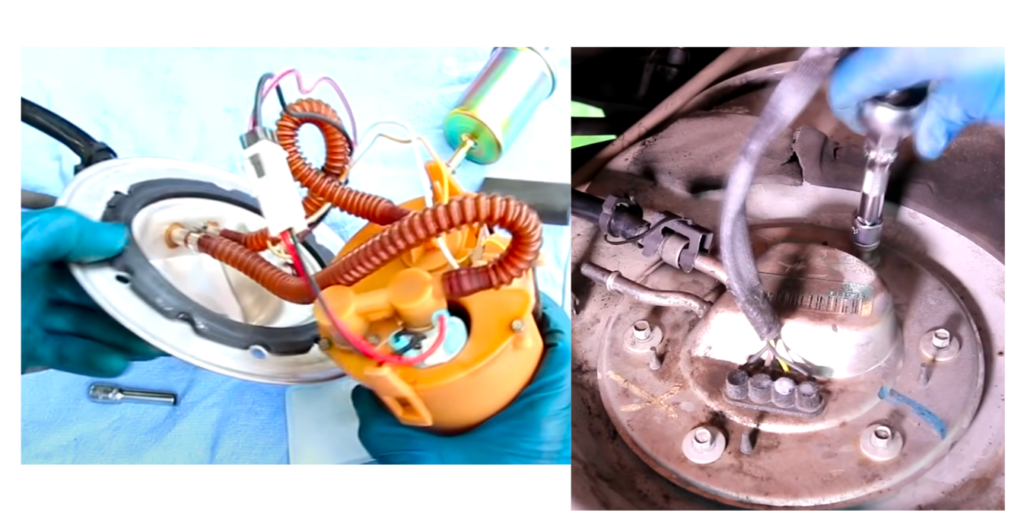
In the figure above, you can see that the fuel pump does not need a cam locking ring. It has a metal cover that is tightened in a criss-cross pattern to secure a fuel pump and avoid fuel leakage.
On the other hand, in some vehicles, a cam locking ring is strategically tightened to secure the new fuel pump.
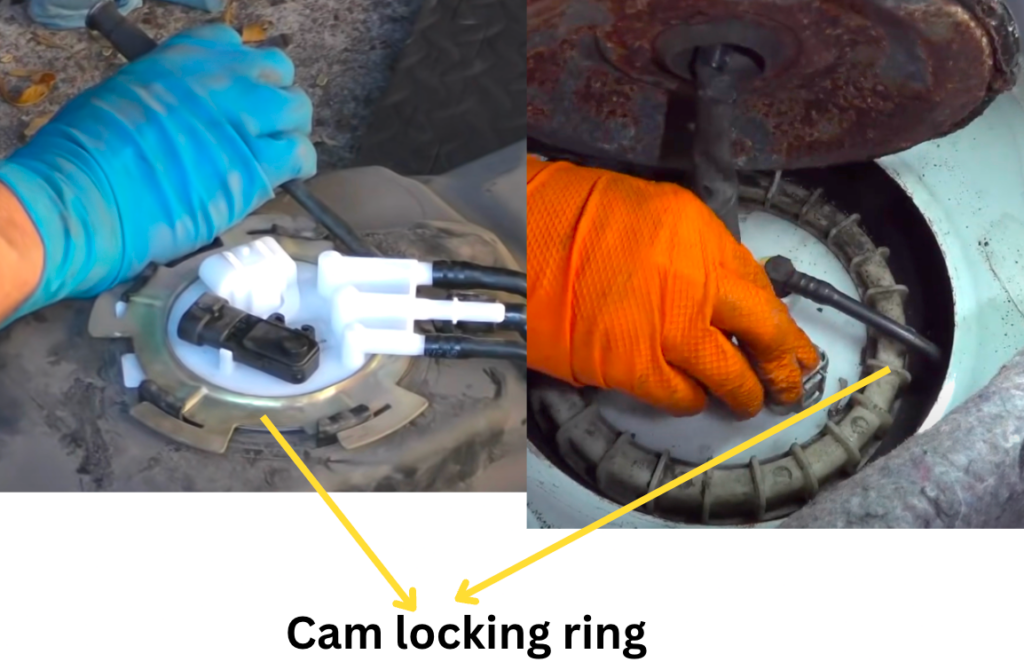
The tightening method of the cam locking ring can be different for each vehicle. So, make sure to follow the instructions in the owner’s manual.
Furthermore, make sure that you replace the old gasket on the fuel tank with a new one while changing the fuel pump.
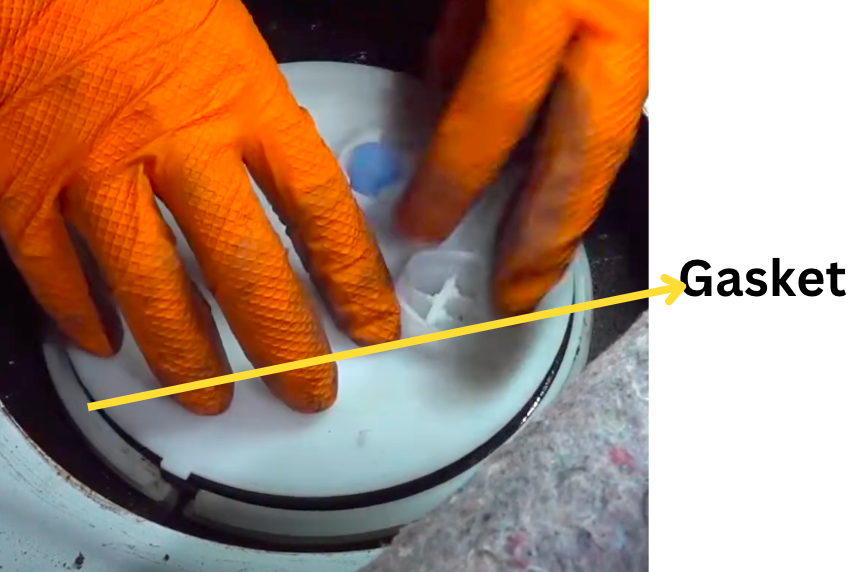
How to check for fuel leaks after installing fuel pump?
You need to verify the fuel pressure at the fuel rail to detect any fuel leaks. For this, you need a fuel pressure test kit.
Each vehicle has recommended fuel pressure range. So, you should check your vehicle’s manual. You also have to verify that fuel is reaching the fuel rail. To learn more, you can read my guide on the symptoms of a bad fuel pressure regulator.
How to fix fuel leaks after fuel pump replacement?
If the fuel lines are not tightened enough, they can cause fuel to leak out. Make sure to tighten the fuel lines properly when installing a new fuel pump.
You should lubricate the fuel hose that goes onto the fuel pump and the fuel pump outlet with a small amount of petroleum jelly.
Moreover, fuel lines can become brittle over time, due to which they can crack and cause fuel leaks after changing the fuel pump. So, when you snap all fuel lines on, make sure that they don’t have any cracks.
Lastly, make sure to properly tighten the fuel hoses with the clamps after changing the fuel pump.
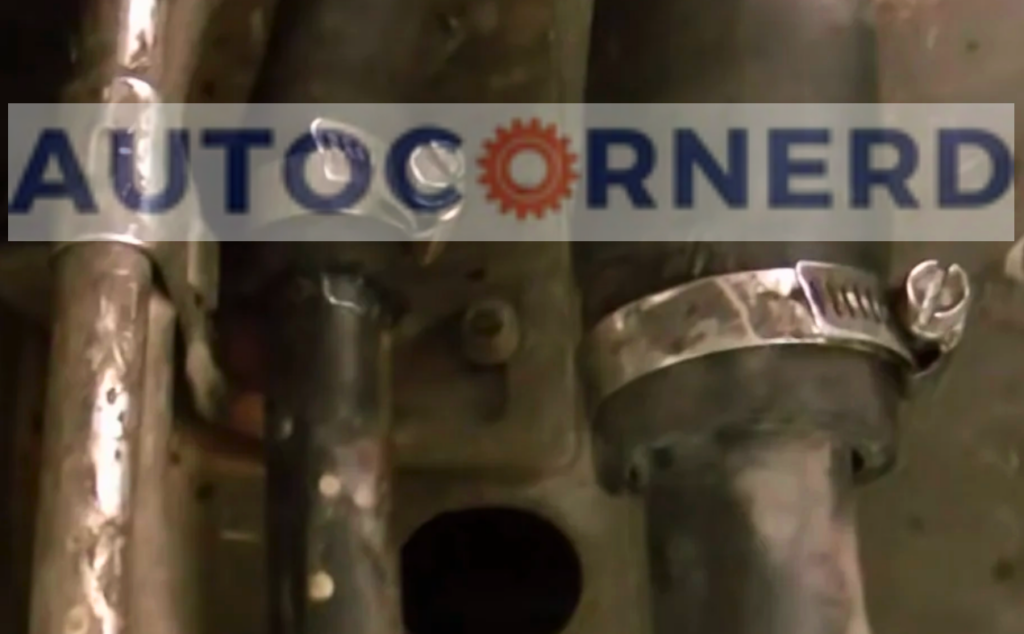
6. Inaccurate Fuel Gauge Readings Upon Pump Replacement
The fuel gauge sending unit is a small device that is located inside your fuel tank. This unit comes with a fuel pump assembly.
Its primary function is to measure the amount of fuel in your tank and send that data to your dashboard. This allows you to see how much gas you have left and when you need to fill up.
When the fuel pump pressure sending unit is working correctly, your fuel gauge should reflect the correct amount of fuel in your tank.
Most people confuse the fuel pump and the fuel gauge sending unit. The fuel gauge sending unit itself is part of a fuel pump assembly. It consists of a controller and a level float with a long arm. The fuel gauge sender is spot-welded onto the side of the fuel pump assembly
On the other hand, a fuel pump is a small cylindrical component you will find inside the casing of the fuel pump assembly.
If you’re just replacing the fuel pump instead of the whole assembly, the chances are that while taking the old fuel pump assembly out of the fuel tank, the electrical mechanism connected to the fuel level float arm has been damaged.
The fuel pump assembly has to be taken out at a slight angle so that the level float easily clears the opening.
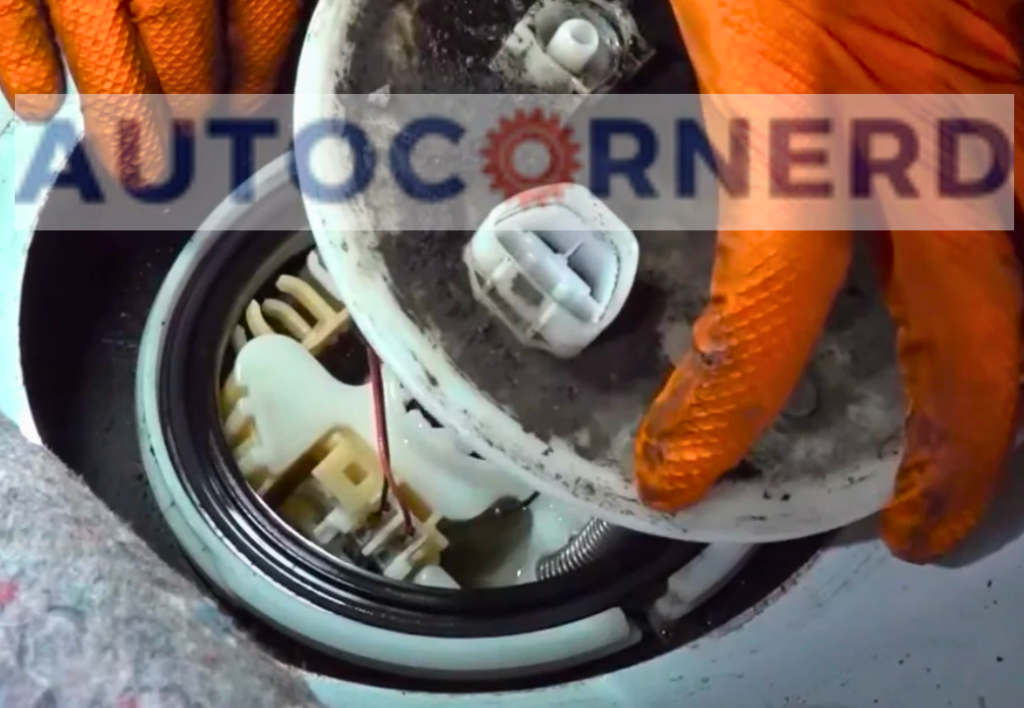
Moreover, while re-installing the fuel pump assembly, make sure that the arm of the fuel level float sits in the same direction as the float arm of the previous fuel pump assembly was mounted. If you accidentally bend the float lever while installing the fuel pump, it will cause inconsistent fuel gauge readings.
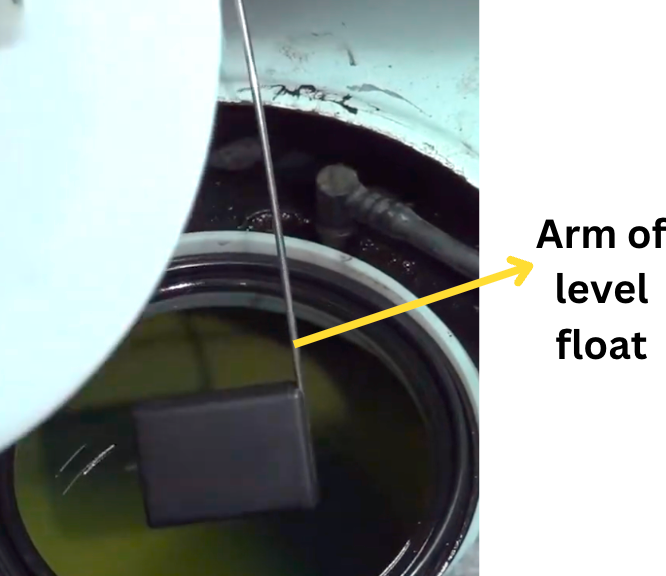
If you only replace the fuel pump, and not the whole assembly, including the sending unit, the fuel gauge sending unit can damage due to high heat if the fuel level becomes less than 25% of the capacity of the fuel tank.
FAQs
How long does a fuel pump last?
The lifespan of a fuel pump can vary depending on the make and model of the vehicle. However, on average, a fuel pump can last anywhere from 50,000 to 100,000 miles.
Can a bad fuel pump damage the engine?
Yes, a bad fuel pump can cause damage to the engine if it is not replaced in a timely manner. It can cause a lean fuel mixture, which can lead to engine damage.
Can a bad fuel pump cause my car to stall?
Yes, a bad fuel pump can cause your car to stall. This occurs when the fuel pump is unable to provide enough fuel to the engine, leading to a loss of power and eventual stalling.
Why is my fuel gauge not working after changing the fuel pump?
If your fuel gauge is not working after changing the fuel pump, it may be due to a problem with the fuel level sensor.
What causes fuel leaks after changing the fuel pump?
Fuel leaks after changing the fuel pump can be caused by improper installation, a damaged fuel line, or a faulty fuel injector.
How does a new fuel pump fail suddenly?
The most common cause of a sudden new fuel pump failure is improper installation. Fuel pumps are delicate components that require careful handling during installation. If the fuel pump is not installed correctly, it can cause damage to the pump’s internal components, leading to sudden failure. Fuel pumps can fail suddenly due to contamination. Fuel pumps can be contaminated by debris or rust particles from the gas tank. This contamination can cause the fuel pump to malfunction, leading to sudden failure.
